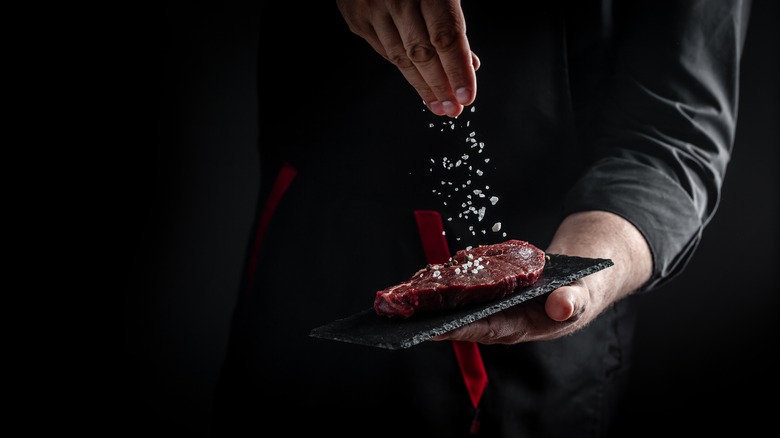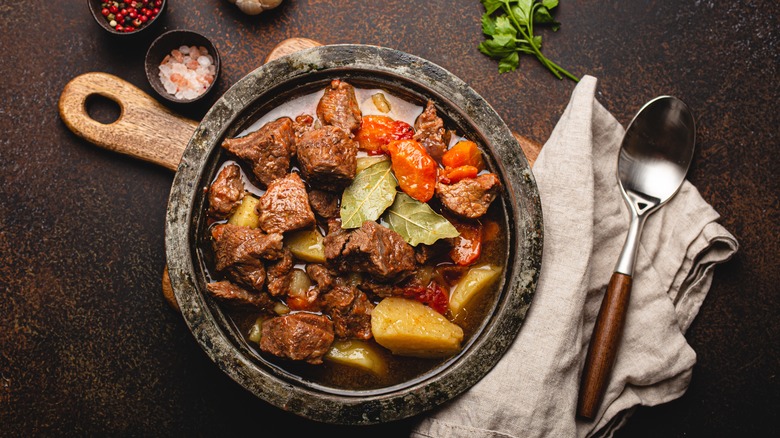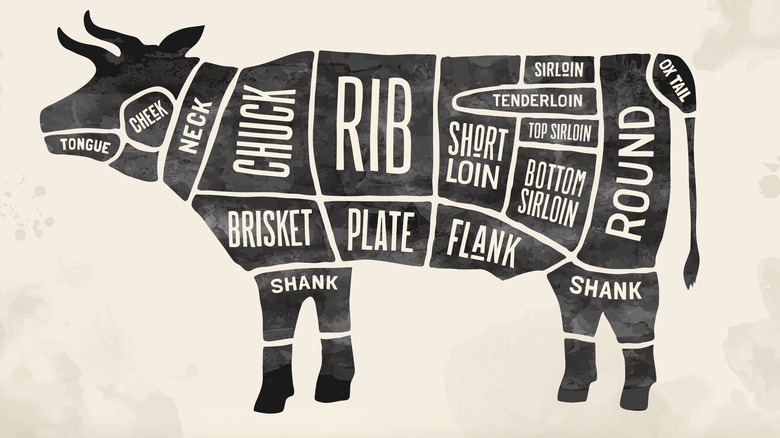For Tender Round Steak, Slow Cooking Is The Absolute Best Method
Among meat lovers, there are few culinary accomplishments as revered as a perfectly prepared steak. It's a meal that may conjure the fond memories of grilling with loved ones, or the unmatched pleasure of enjoying a prime cut cooked to perfection by a seasoned chef. But regardless of the context in which we eat this meal or the polarizing preference for how well done you like your meat, we can all agree on one thing: Steak should be juicy, tender, and packed with flavor.
Unfortunately, there is no one-size-fits-all approach to cooking the perfect steak. To successfully produce a finished product that's so tender it will melt in your mouth, it's essential that you fully understand the cut of meat you're working with and are choosing a cooking method that will produce optimal results. This can be tricky when it comes to tougher cuts of meat, like round steak — which also happens to be a more affordable cut of cow. By slowly cooking round steak, you allow the meat from this active muscle, which often contains significant amounts of connective tissue, to soften and become every bit as succulent as its more popular counterparts.
Why is slow cooking the best method for round steak?
The round is a heavily used, collagen-dense muscle of the cow. That means it's a very strong muscle full of tendons, ligaments, and other tough pieces you probably wouldn't want to eat without tenderizing. Because of this, quickly cooking a round steak like we would a more delicate cut will result in tough and chewy meat. The round is a lean cut of beef, too — since it doesn't get the kick of flavor many of the best cuts of steak do from their marbling, it needs a little extra help to develop an equally decadent flavor profile.
The struggle you face when cooking this kind of meat is raising the temperature enough to turn hard collagen into soft, savory gelatin that improves texture and gives us flavor without drying it out by overcooking. One way of doing this is to slice the meat and cover it in a braising liquid, then slow cook at around 160 degrees Fahrenheit. After around 30 minutes at this temperature, the tough collagen will begin to melt into gelatin and produce a steak that is both flavorful and tender. To take your dish to the next level, cut the heat and allow the meat to cool in the now gelatin-infused braising liquid for an additional 20-30 minutes, allowing it to take on even more flavor without becoming tough.
What is round steak?
For those on a budget or looking to feed a large family, round steak is a great option. Cut from the back leg and hind quarters of a cow, also known as the beef round primal cut, this type of beef is plentiful. Not only will you likely be able to find round steak at your local grocery store, but it's also a relatively inexpensive way to incorporate important nutrients – with plenty of iron, potassium, selenium, and vital B vitamins — into your diet.
While beef cuts like filet mignon, T-bone, and ribeye are commonly touted as some of the best cuts of steak, you probably won't see round steak listed in their company. This isn't because the meat is any less delicious or nutritious, but because it's less in demand than smaller, more tender cuts and requires more time cooking to produce the best results. This means round steak isn't ideal for the traditional cooked-to-order steak dinner we find in restaurants, but is perfect for dishes like tender and tangy roast beef or a simple yet delicious carne asada steak tartare.
If you're looking for a versatile and readily accessible cut of beef, round steak is a great option that won't break the bank. Cook it low and slow for delicious, melt-in-your-mouth tender meat.



